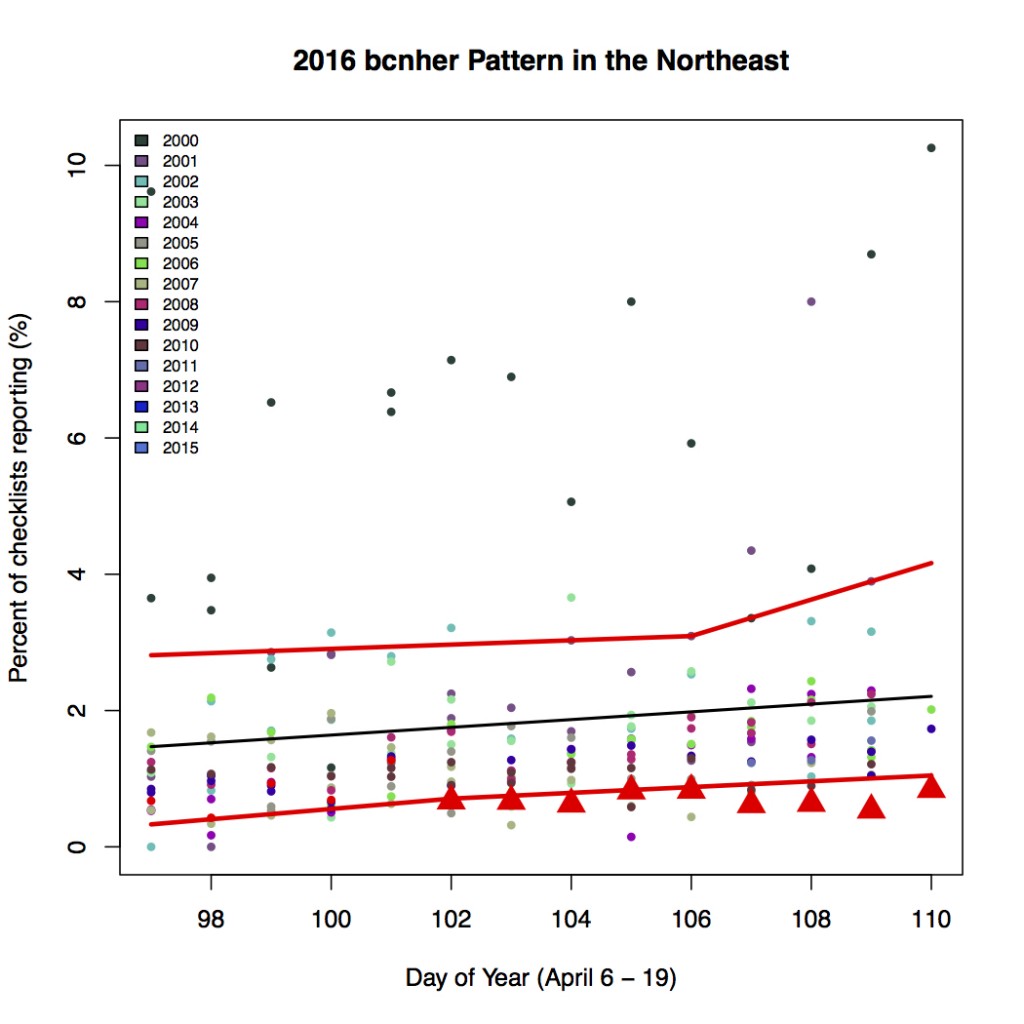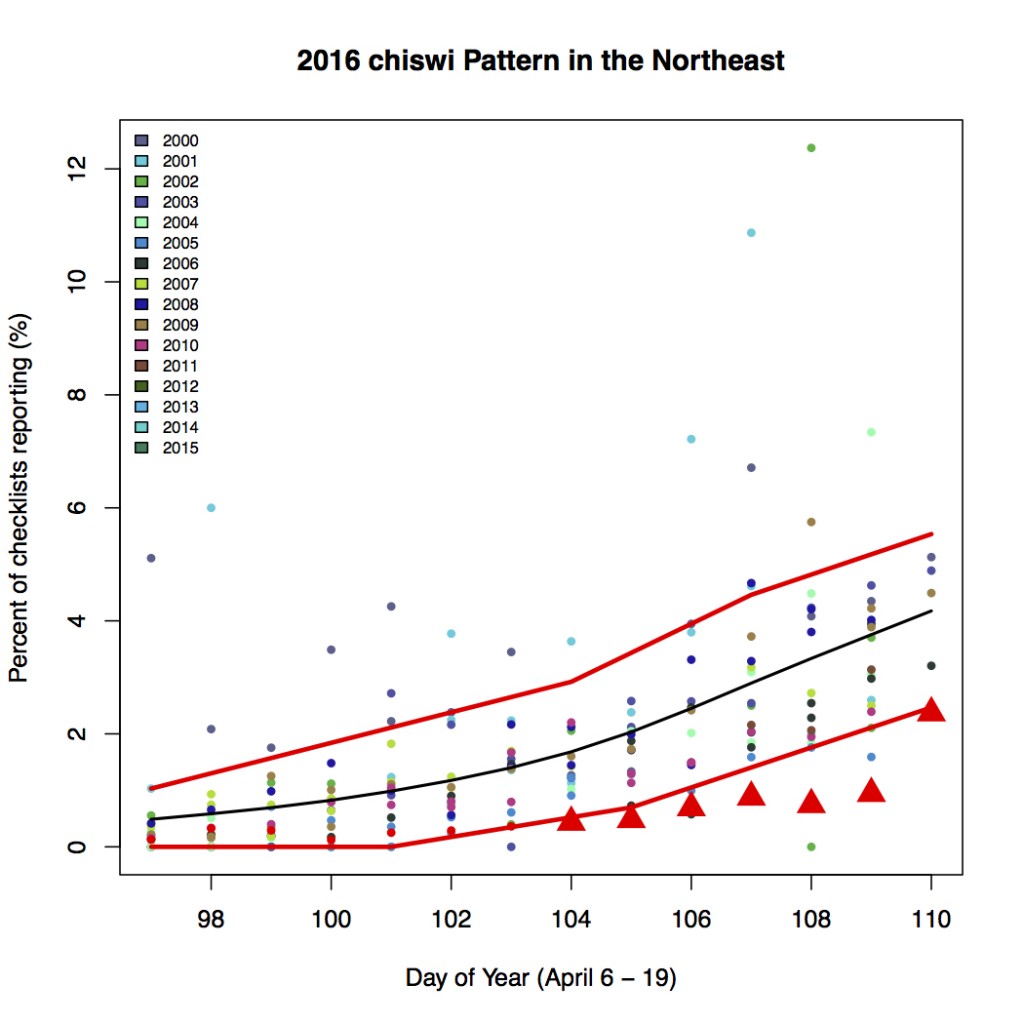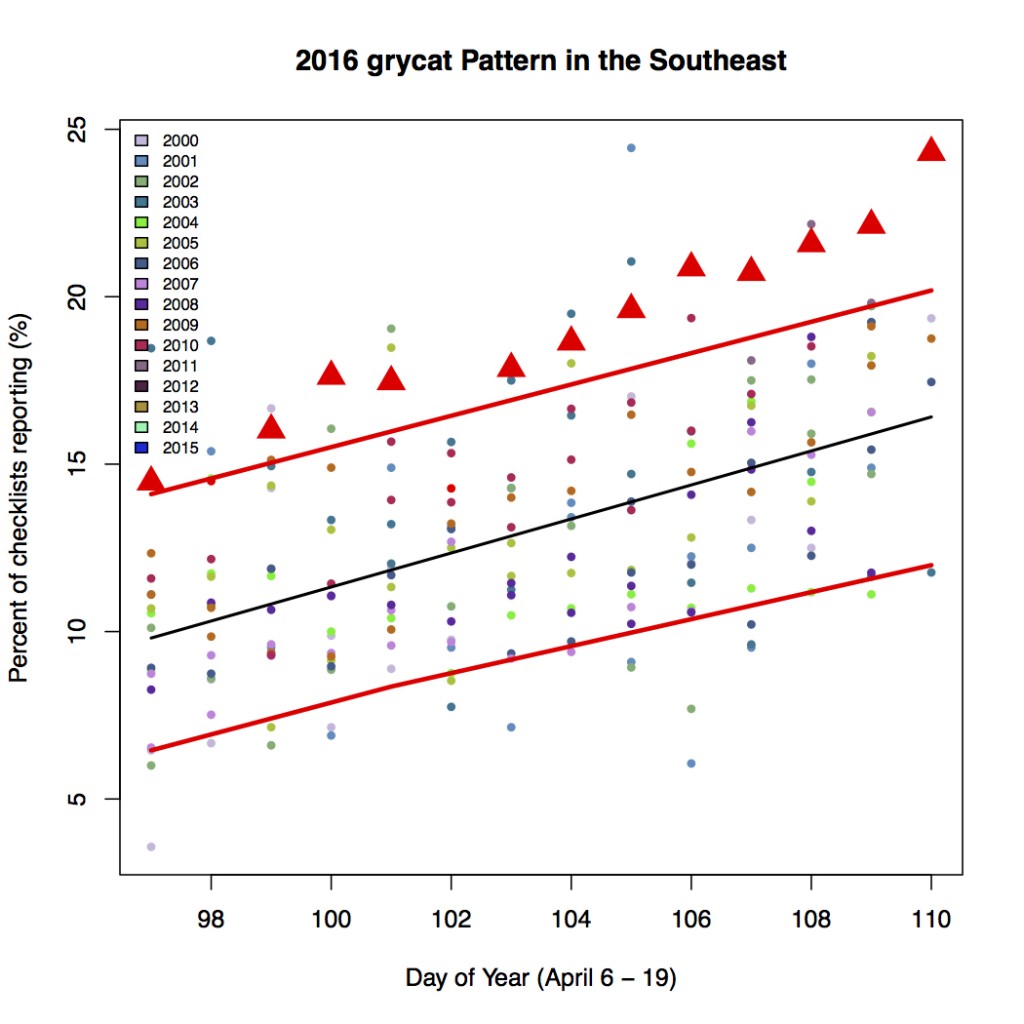Team BirdCast has been experimenting with ways to detect changes in bird distributions as they are occurring. With the help of two talented Cornell undergraduates, Alex Wiebe and Benjamin Van Doren, who are leading the charge, we introduce the BirdCast Anomaly Detector.
To detect unusual events–such as the beginnings of a Snowy Owl invasion, or an unusually late arrival of Yellow Warblers–we run the BirdCast Anomaly Detector on eBird citizen science data. We download eBird frequency data from each of four major BirdCast regions in the US, and we compare the current year against data from the past fifteen years. We use these historical data as a baseline for what we expect for to observe this year. We then use nonparametric quantile regression smoothing at the 10th and 90th percentiles to calculate the range in which we expect most new data to fall, and we record any points that exceed those boundaries. We then identify the species that show many unusually high or unusually low frequencies during the past two weeks.
The graphs below show eBird data for individual species during 6-19 April from 2000 to 2015. Overlaid are red points, which represent the eBird data of the species from 2016. Triangular red points are from the current year, and they indicate when frequencies of observation of the species fall above or below the typical range. The species below show particularly unusual patterns–many red triangles–indicating that this year is quite different from 2000-2015. What may be causing these anomalies will be fodder of future research, without question!
Rufous Hummingbird in the West
Anomalously low reporting of Rufous Hummingbird is apparent in the second and third weeks of April across the West.

Baird’s Sandpiper in the Great Plains
The beginning of the second and end of the third weeks in April saw higher than expected frequencies of Baird’s Sandpiper occurrence in the Great Plains.

Black-crowned Night-Heron in the Upper Midwest and Northeast
Lower than expected frequency of occurrence for Black-crowned Night-Heron was apparent from the end of the second through the third week in April in the Upper Midwest and Northeast.

Chimney Swift in the Upper Midwest and Northeast
Similar to the pattern of Black-crowned Night-Heron, Chimney Swift showed lower than expected frequencies of occurrence in the Upper Midwest and Northeast from 13-19 April.

Gray Catbird in the Gulf Coast and Southeast
Gray Catbird exhibited anomalously high frequency of occurrence in the Gulf Coast and Southeast for much of the second and third weeks of April.





